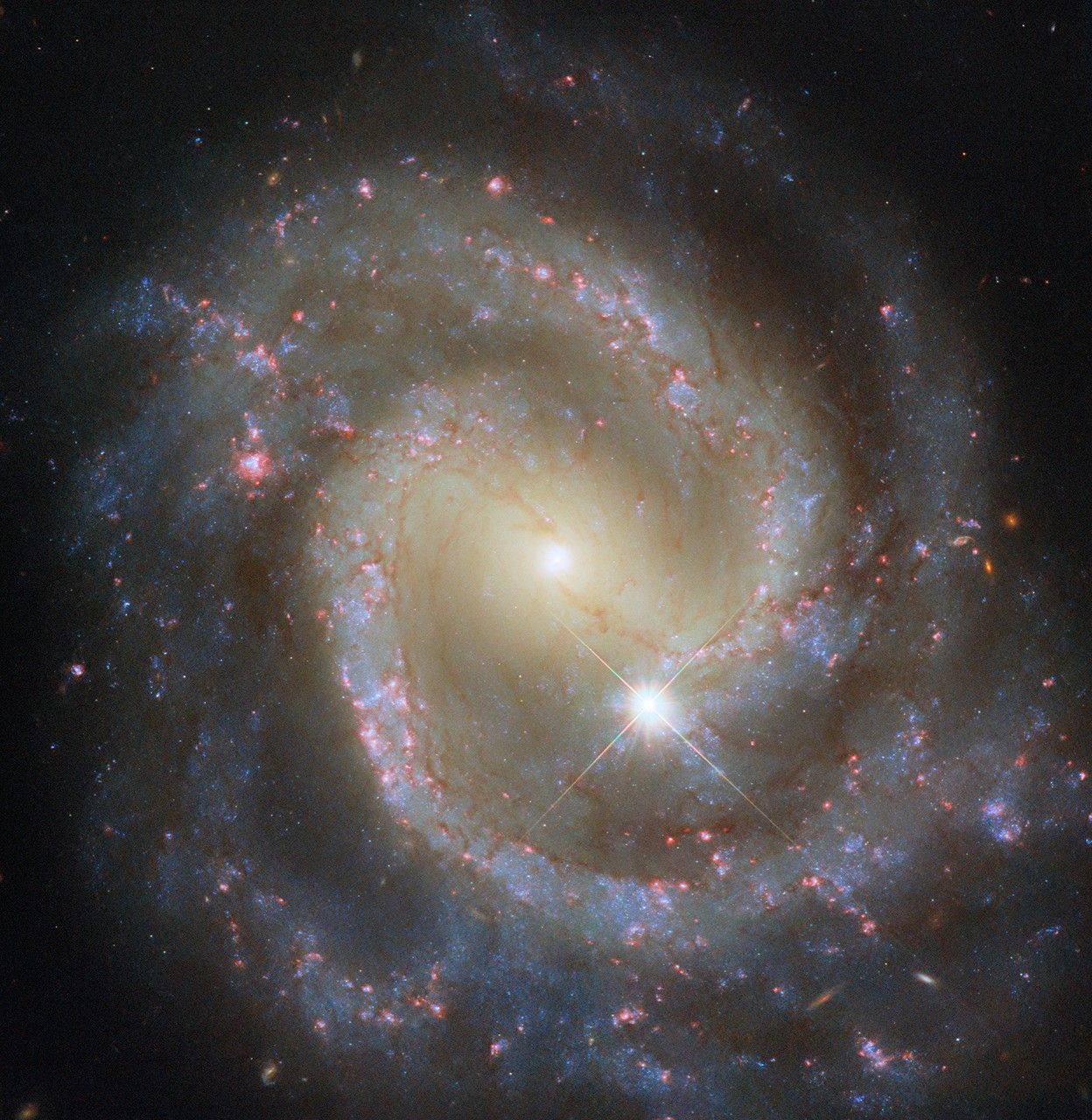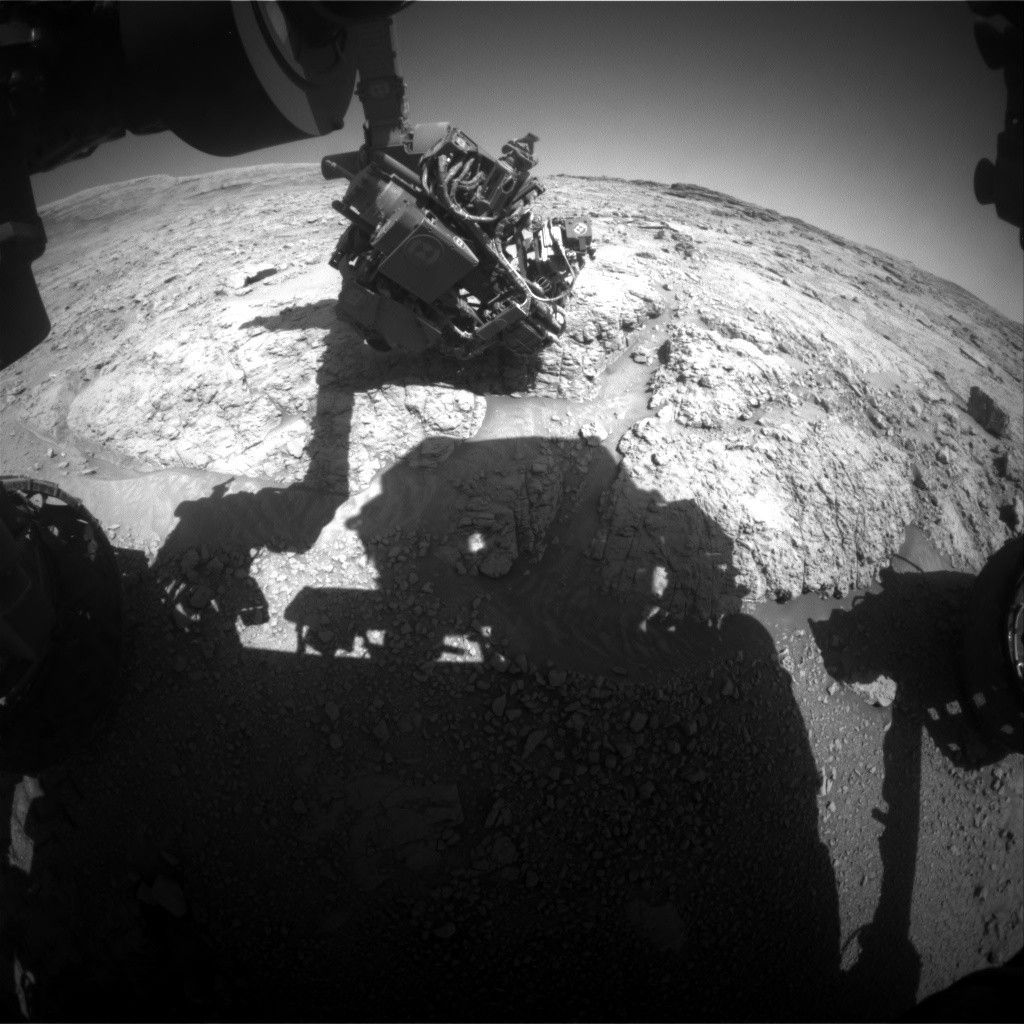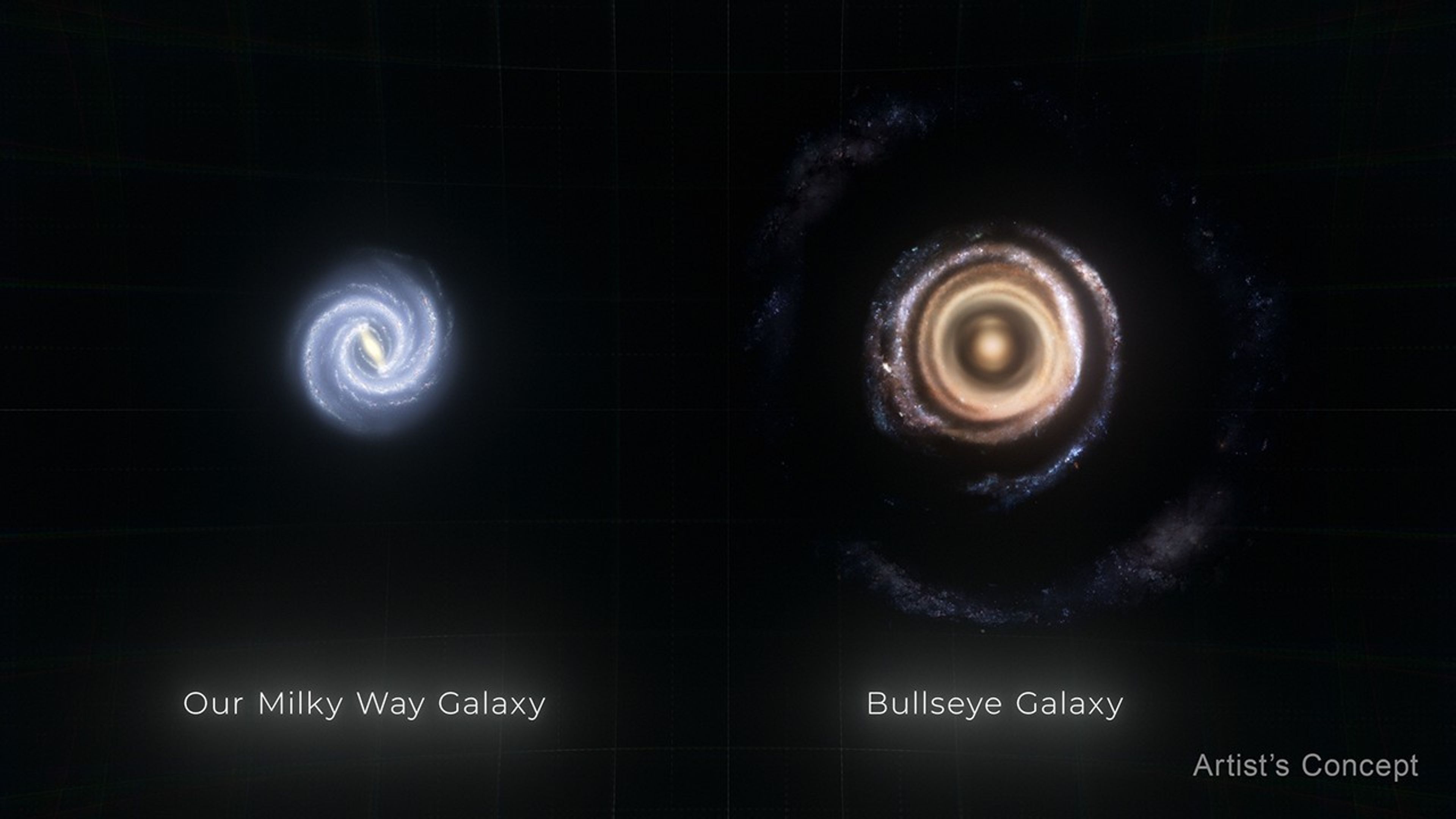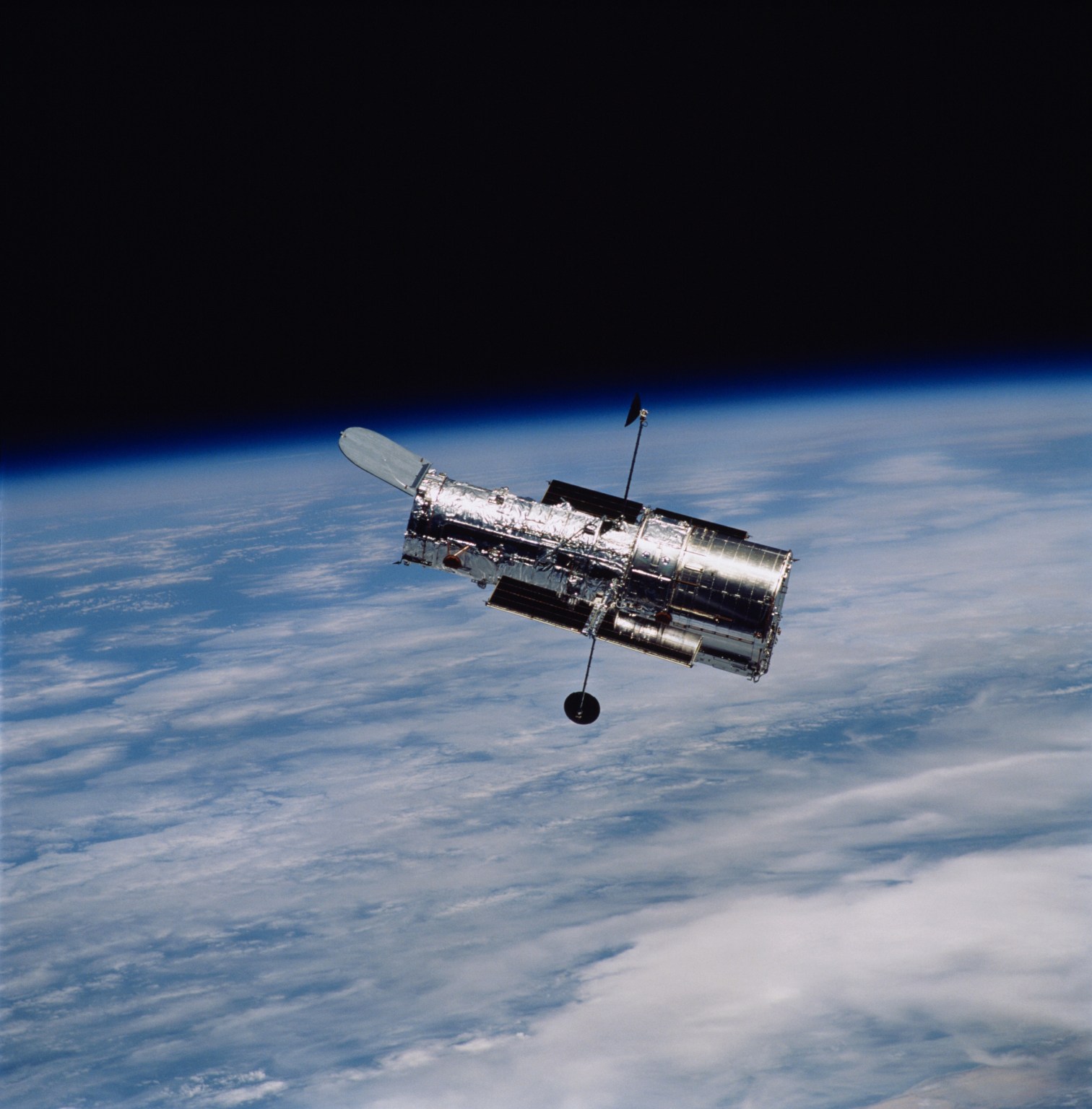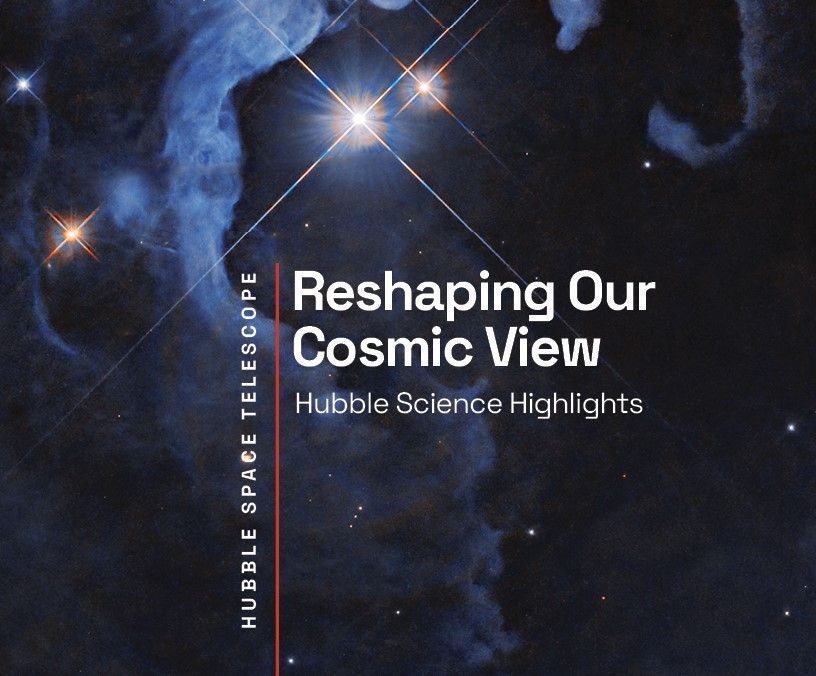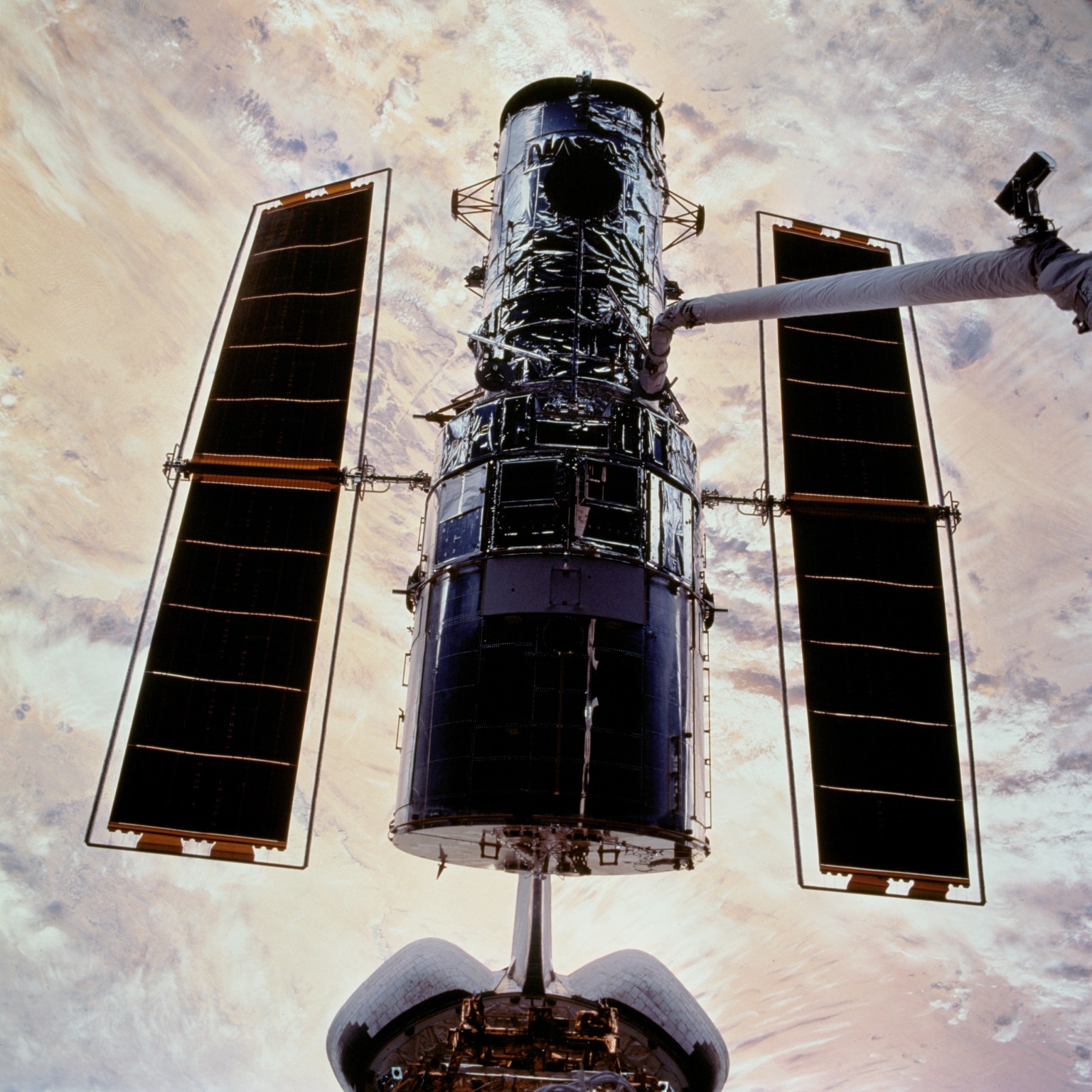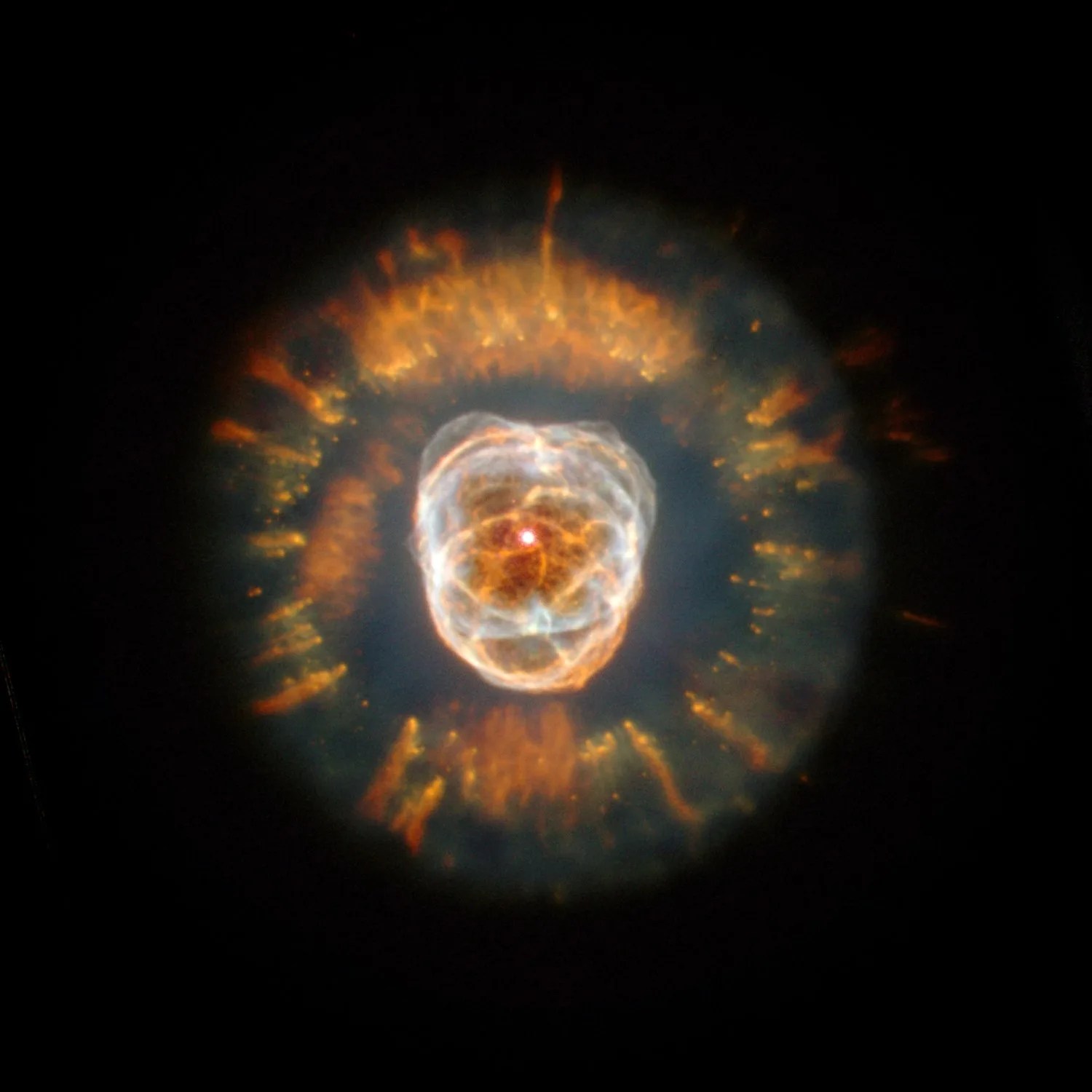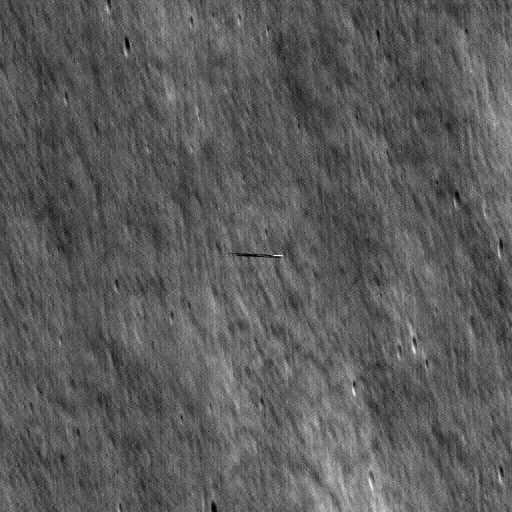Straight Shot: Hubble Investigates Galaxy with Nine Rings
NASA’s Hubble Space Telescope has captured a cosmic bullseye! The gargantuan galaxy LEDA 1313424 is rippling with nine star-filled rings after an “arrow” — a far smaller blue dwarf galaxy — shot through its heart. Astronomers using Hubble identified eight visible rings, more than previously detected by any telescope in any galaxy, and confirmed a […]
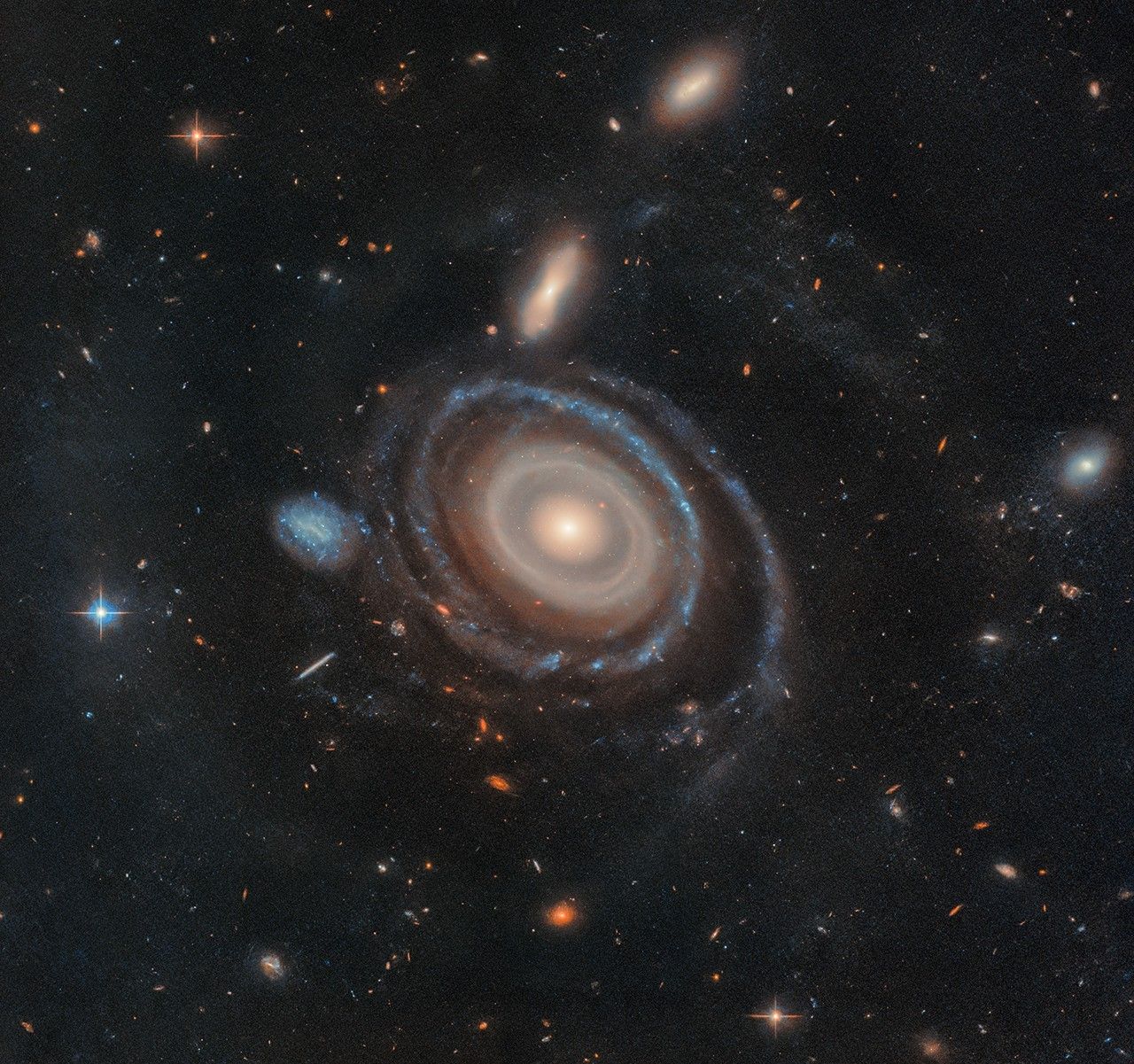
Straight Shot: Hubble Investigates Galaxy with Nine Rings
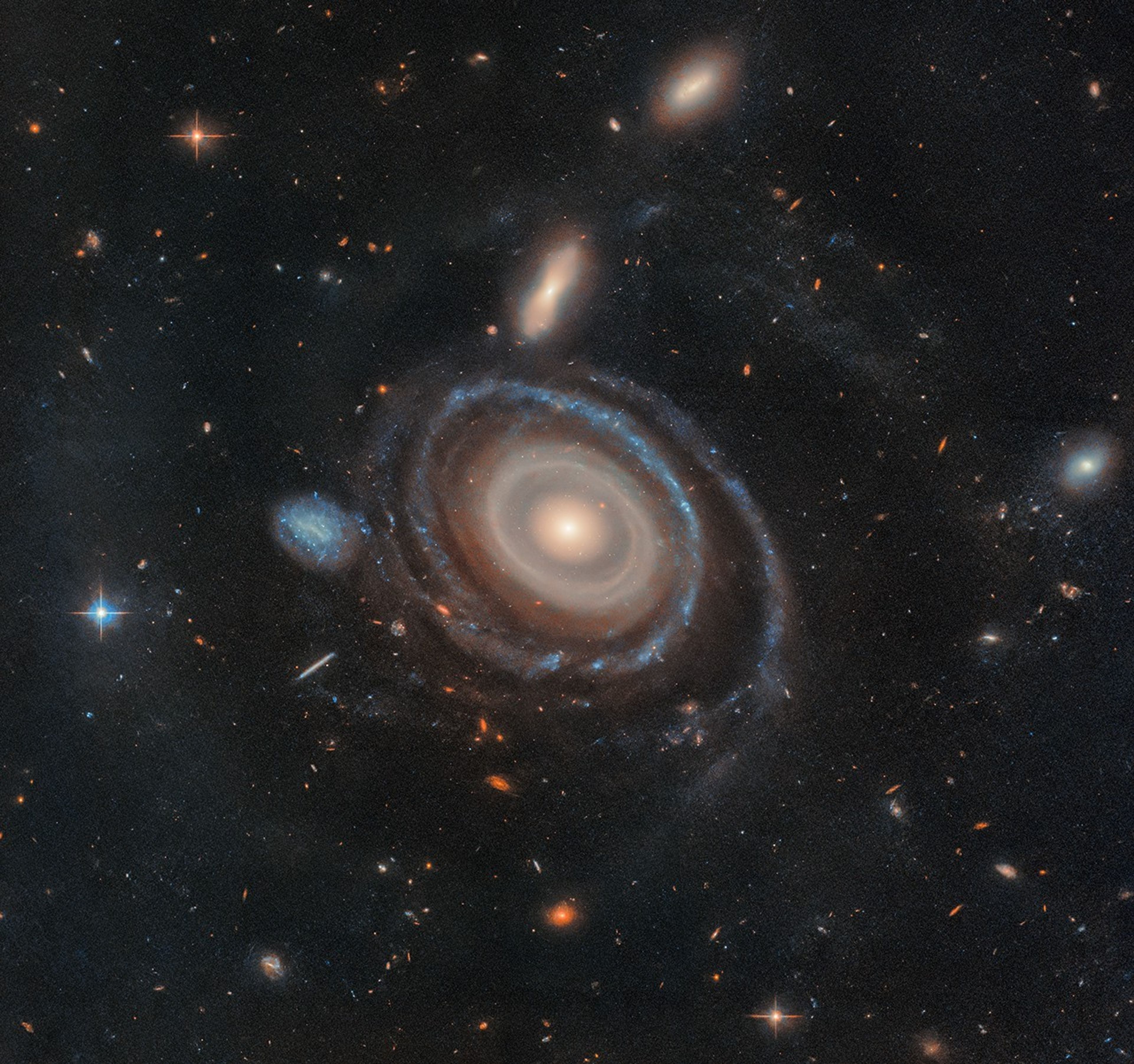
NASA, ESA, Imad Pasha (Yale), Pieter van Dokkum (Yale)
NASA’s Hubble Space Telescope has captured a cosmic bullseye! The gargantuan galaxy LEDA 1313424 is rippling with nine star-filled rings after an “arrow” — a far smaller blue dwarf galaxy — shot through its heart. Astronomers using Hubble identified eight visible rings, more than previously detected by any telescope in any galaxy, and confirmed a ninth using data from the W. M. Keck Observatory in Hawaii. Previous observations of other galaxies show a maximum of two or three rings.
“This was a serendipitous discovery,” said Imad Pasha, the lead researcher and a doctoral student at Yale University in New Haven, Connecticut. “I was looking at a ground-based imaging survey and when I saw a galaxy with several clear rings, I was immediately drawn to it. I had to stop to investigate it.” The team later nicknamed the galaxy the “Bullseye.”

Hubble and Keck’s follow-up observations also helped the researchers prove which galaxy plunged through the center of the Bullseye — a blue dwarf galaxy to its center-left. This relatively tiny interloper traveled like a dart through the core of the Bullseye about 50 million years ago, leaving rings in its wake like ripples in a pond. A thin trail of gas now links the pair, though they are currently separated by 130,000 light-years.
“We’re catching the Bullseye at a very special moment in time,” said Pieter G. van Dokkum, a co-author of the new study and a professor at Yale. “There’s a very narrow window after the impact when a galaxy like this would have so many rings.”
Galaxies collide or barely miss one another quite frequently on cosmic timescales, but it is extremely rare for one galaxy to dive through the center of another. The blue dwarf galaxy’s straight trajectory through the Bullseye later caused material to move both inward and outward in waves, setting off new regions of star formation.
How big is the Bullseye? Our Milky Way galaxy is about 100,000 light-years in diameter, and the Bullseye is almost two-and-a-half times larger, at 250,000 light-years across.
The researchers used Hubble’s crisp vision to carefully to pinpoint the location of most of its rings, since many are piled up at the center. “This would have been impossible without Hubble,” Pasha said.
They used Keck to confirm one more ring. The team suspects a 10th ring also existed, but has faded and is no longer detectable. They estimate it might lie three times farther out than the widest ring in Hubble’s image.
A One-to-One Match with Predictions
Pasha also found a stunning connection between the Bullseye and a long-established theory: The galaxy’s rings appear to have moved outward almost exactly as predicted by models.
“That theory was developed for the day that someone saw so many rings,” van Dokkum said. “It is immensely gratifying to confirm this long-standing prediction with the Bullseye galaxy.”
If viewed from above, it would be more obvious that the galaxy’s rings aren’t evenly spaced like those on a dart board. Hubble’s image shows the galaxy from a slight angle. “If we were to look down at the galaxy directly, the rings would look circular, with rings bunched up at the center and gradually becoming more spaced out the farther out they are,” Pasha explained.
To visualize how these rings may have formed, think about dropping a pebble into a pond. The first ring ripples out, becoming the widest over time, while others continue to form after it.
The researchers suspect that the first two rings in the Bullseye formed quickly and spread out in wider circles. The formation of additional rings may have been slightly staggered, since the blue dwarf galaxy’s flythrough affected the first rings more significantly.
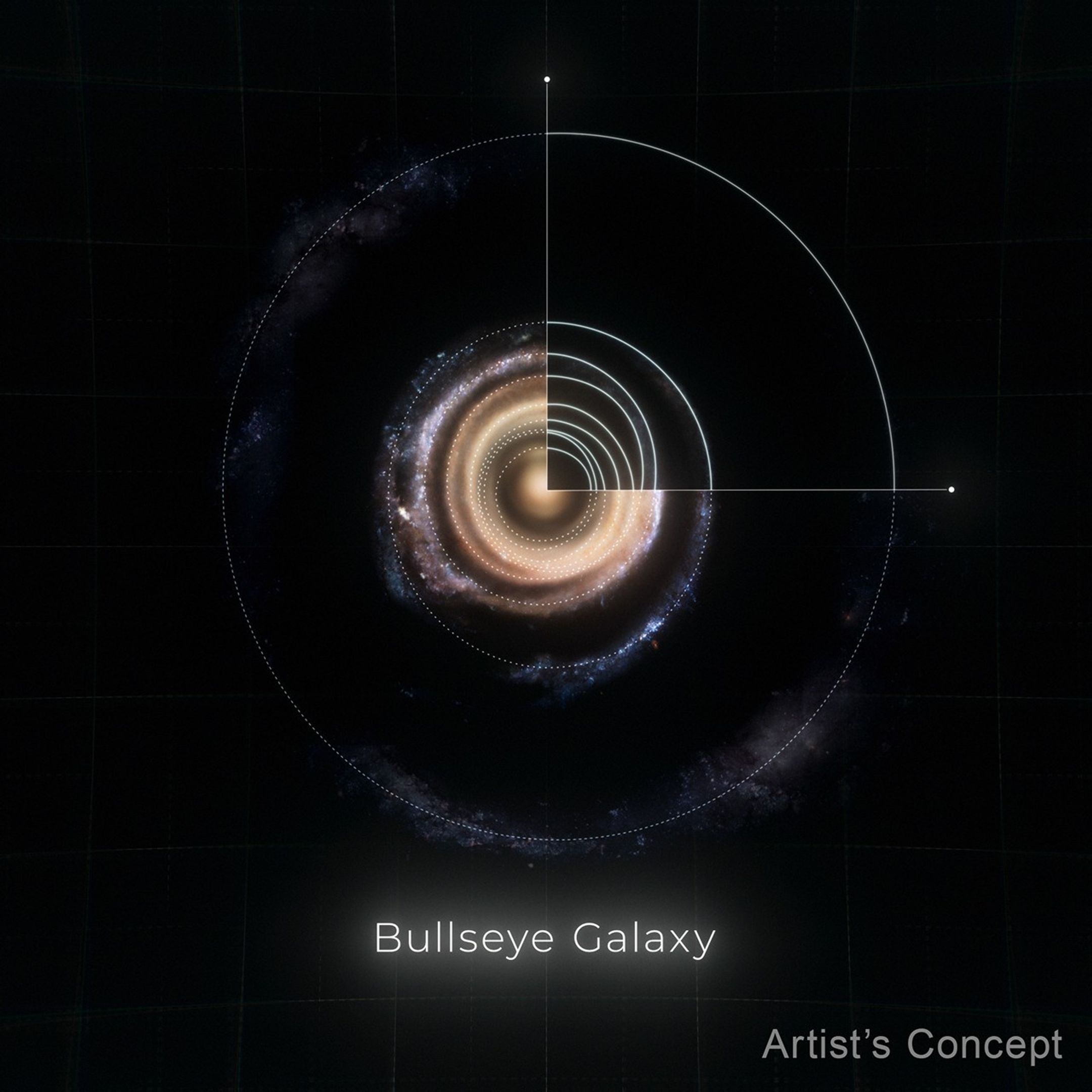
Individual stars’ orbits were largely undisturbed, though groups of stars did “pile up” to form distinguishable rings over millions of years. The gas, however, was carried outward, and mixed with dust to form new stars, further brightening the Bullseye’s rings.
There’s a lot more research to be done to figure out which stars existed before and after the blue dwarf’s “fly through.” Astronomers will now also be able to improve models showing how the galaxy may continue to evolve over billions of years, including the disappearance of additional rings.
Although this discovery was a chance finding, astronomers can look forward to finding more galaxies like this one soon. “Once NASA’s Nancy Grace Roman Space Telescope begins science operations, interesting objects will pop out much more easily,” van Dokkum explained. “We will learn how rare these spectacular events really are.”
The team’s paper was published on the February 4, 2025 in The Astrophysical Journal Letters.
The Hubble Space Telescope has been operating for over three decades and continues to make ground-breaking discoveries that shape our fundamental understanding of the universe. Hubble is a project of international cooperation between NASA and ESA (European Space Agency). NASA’s Goddard Space Flight Center in Greenbelt, Maryland, manages the telescope and mission operations. Lockheed Martin Space, based in Denver, also supports mission operations at Goddard. The Space Telescope Science Institute in Baltimore, which is operated by the Association of Universities for Research in Astronomy, conducts Hubble science operations for NASA.
Explore More
Media Contact:
Claire Andreoli (claire.andreoli@nasa.gov)
NASA’s Goddard Space Flight Center, Greenbelt, MD
Claire Blome and Ray Villard
Space Telescope Science Institute, Baltimore, MD
What's Your Reaction?



















.jpg?#)












